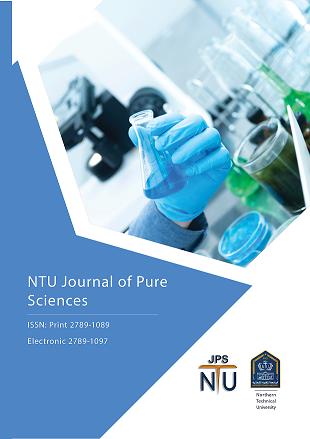Assessment the Ag and ZnO Biosynthesized Nanoparticles effects on Giardia lamblia trophozoites which grown in HSP-1 culture media
DOI:
https://doi.org/10.56286/ntujps.v2i1.316Keywords:
Giardia, Silver nanoparticles, Zinc oxide, Metronidazole, in vitroAbstract
Chemotherapy with drugs such as Metronidazole (MTZ) derivative products is currently the preferred treatment for giardiasis. However, these agents have been linked to a variety of negative side effects, varying from nausea to probable geno toxicity. Aim of this study to conduct an in vitro study on the efficiency of silver (Ag) and zinc oxide (ZnO) nanoparticles (NPs) biosynthesized by green ecofriendly method using Pseudomonas aeruginosa and Escherichia coli against Giardia trophozoites. Methods Silver and Zinc oxide NPs formation was confirmed based on ability of selected bacteria to biosynthesized these NPs. The particle size arranges of (29.5 nm) for Ag P. aeruginosa and (32 nm) for Ag E. coli. Particle size of ZnO for P. aeruginosa was (25 nm) and (29.7nm) for E. coli. Giardia trophozoites cultivated on HSP-1 media were subjected to different concentration of biosynthesized NPs at (0.025, 0.050, 0.075 mg/ml) for (24, 48, 72 hrs.). Significant reduction (P<0.05) in trophozoite number was recorded by the two groups of Ag and ZnO nanoparticles for both bacteria and was 91% for Ag NPs for both E. coli and P. aeruginosa and 73% for ZnO for both bacteria at concentration of 0.075mg/ml after 72 hrs. Morphological difference appeared as destructive with the release of the cytoplasm outside. The cytotoxic effects of Ag and ZnO NPs on Giardia lamblia trophozoite exceeded that of metronidazole, these particles can be recommended for use, especially at higher concentrations that lead to total death rates.
Downloads
Downloads
Published
Issue
Section
License
The journal applies the license of CC BY (a Creative Commons Attribution 4.0 International license). This license allows authors to keep ownership of the copyright of their papers. But this license permits any user to download, print out, extract, reuse, archive, and distribute the article, so long as appropriate credit is given to the authors and the source of the work. The license ensures that the article will be available as widely as possible and that the article can be included in any scientific archive. Creative Commons License This work is licensed under a Creative Commons Attribution 4.0 International License.





